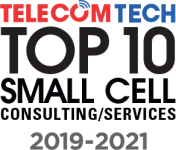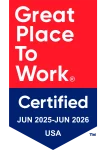Tools including drones & automated document generation have well-positioned small cell & fiber-focused provider to accelerate past COVID-19-related slowdowns
Today more than ever, having eyes in the sky vs. boots on the ground gives carriers a healthy advantage.
It keeps them from pushing pause on critical projects, missing out on new opportunities, and reshuffling or even endangering their workforce.
One North Carolina-based firm had the foresight to elevate manual field work well before the COVID-19 disruption, integrating drones into its playbook for geospatial data collection and virtual field engineering.
“Implementing drones and other technology into our workflow has long made sense when you look at the added speed and accuracy we can bring to the table for carriers,” said Lindon Hayes, CEO & Founder of Essentia Inc. “And that was before COVID-19 disrupted the industry. Today, these approaches are uniquely suited to moving small cell and fiber builds forward without compromising the health and well-being of our workforce.”
Drones represent just one way in which Essentia has modernized and automated the legacy toolkit long utilized by carriers and contractors. The upshot is having the ability to build thousands of small cells and lay hundreds of miles of fiber each month, said Hayes, in large part because of their commitment to technology.
Essentia now sits poised to give carriers something that’s fleeting these days: certainty in an uncertain landscape.
Navigating Today’s Changing Landscape
It became real around the time organizers pulled the plug on the popular MWC mobile conference in Barcelona back in late February.
In the time between March 3-6 and March 17-19, the global workforce reporting they were afraid to go to work because of the risk of virus exposure jumped from 29% to 42%, according to a Forrester study. Then the dominoes fell: all conferences were eventually cancelled or converted to virtual events. Global commercial air traffic dropped nearly a third in March compared with 2019 — with the month’s final week reaching a 63% decline, according to Flightradar24 tracking. Scattershot “stay-at-home” and “essential business” guidelines further fragmented the working world, often isolating interactions to video and teleconferences.
Flying under the flag of “essential work,” telecom’s relative productivity surpasses those industries effectively shut down by “stay at home” orders. But there real concerns confronting the traditional way that work has been done.
A third of telecom professionals believes there will be some decrease in demand for their services, according to Sitetracker’s 2020 Telecom Infrastructure Provider Outlook “Special Update” on COVID-19’s impact. Additionally, 35% of respondents said that recent changes regarding remote work impacted their company’s ability to deploy or maintain infrastructure.
Unpacking the eSpeed Platform
Essentia’s differentiator is eSpeed, an aptly named, proprietary platform that pushes the pace and dials in accuracy across the fiber and small cell value chains. In automating key tasks, and thus removing the need for travel and even in-person meetings, eSpeed is also helping Essentia and its clients meet today’s COVID-19-related challenges.
But what exactly is eSpeed?
“Think of it as a set of hardware, software, and tools built around efficient processes,” Hayes said. “We’re talking about databases, apps, plus proprietary programming and workflows.”
With eSpeed, Essentia unlocks seamless integration into customer platforms.
It’s even more impressive when you see it in action. Take the drones, for example, perhaps the most physically impressive implement in Essentia’s eSpeed arsenal.
During one particular fiber design project in Jacksonville, Florida, Essentia was tagged in by the client on a Tuesday morning to collect data for a 30-mile stretch. A traditional approach would entail two to four engineers hoofing it out in the field, recording data with a notepad and pen. It’s a multi-week assignment drawing budget for hotels, vehicles, you name it. Months ago, it was inefficient, but today this approach may pose real health risks to field workers as well.
Harnessing drone technology and generating 1,000 site photos per mile, Essentia finished the data collection on Wednesday — a one-day turnaround. All with zero travel costs and minimal opportunity for human error.
“We’re the only company I know of that can design fiber networks without travel using drones,” Hayes said. “That’s massively impactful on a regular day. But it’s a game-changer today.”
Small cell is likewise being supercharged by eSpeed. Essentia has compressed the turnaround time for generating Site Candidate Information Packages, commonly known as SCIPs, from two to three hours to about 30 seconds.
“The key is that we’ve modernized the process for collecting this data,” said Zack Raboin, Sr. Manager of Innovation and Technology.
Essentia’s team in the field now collects pole data with a handheld device that captures measurements and images with point-and-shoot ease. It’s not just an upgrade over the current manual approach of using tools such as height sticks and wheels. Data captured is then wirelessly transmitted to the eSpeed platform at the point of entry, eliminating the need for further transcription.
“eSpeed is all about finding and leveraging efficiencies at every turn of the process,” Raboin said. “It wasn’t designed anticipating the current challenges of COVID-19, but it’s certainly made for the moment.”
When all is said and done, eSpeed can reduce the small cell site acquisition and engineering process by 60 to 90 days. That only includes time savings derived from innovation that’s currently being deployed. Essentia already has new cutting-edge tools and processes waiting on deck.
Take, for example, site walks. With the tandem capabilities of drones and electronic pole data capture, Essentia can find the two or three best candidates when simply supplied with longitude and latitude coordinates, whether a carrier is placing poles, replacing them, or doing a co-location. Essentia can then share these site candidates with clients — photos, video, and all the relevant data — without anyone having to leave the office. No travel or congregating together.
A Macro Perspective
Finally, there’s the elephant in the room. As the world works from home and streams video at all-time rates, the telecom industry faces potential added challenges.
According to Internet testing and data outfit Ookla and its Speedtest service, “Week over week we have started to see a degradation of speeds.”
That’s on a global level. In North America, fixed broadband speeds have only declined slightly thus far. But with “stay at home” order extensions and rampant speculation about whether working and learning from home may become part of the new normal to some degree, the telecom industry faces big questions.
“We’re always looking at what’s next,” Hayes said. “That’s the way of thinking that drove the evolution of our capabilities. And Essentia will fulfill whatever role is needed. That includes stepping up to address any temporary gaps that eSpeed is uniquely built to fill. Or taking a step back and looking at the big picture of how these events impact the future of telecom.”
See a video demonstrating Essentia’s eSpeed platform in action and contact us to learn more.





